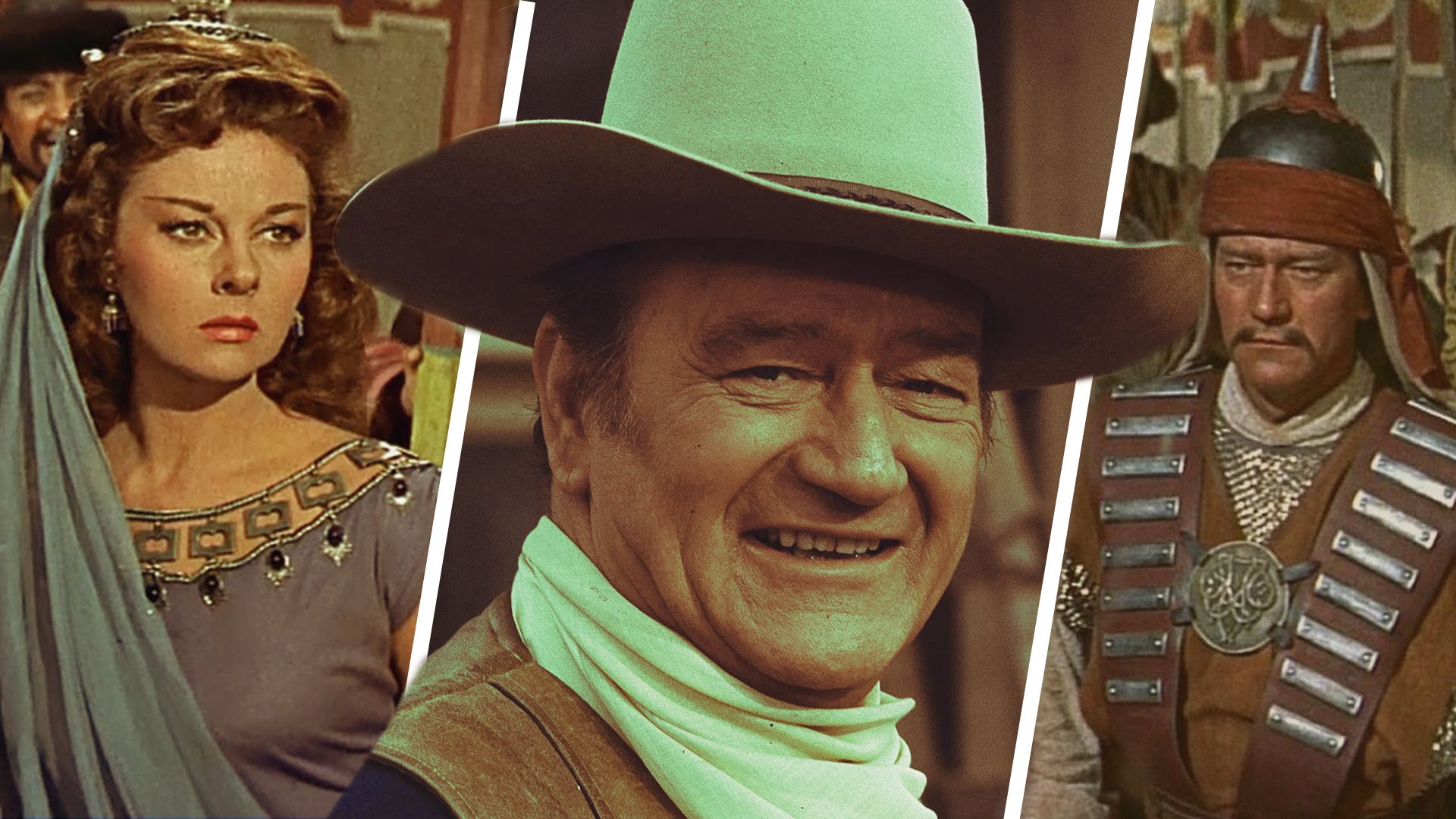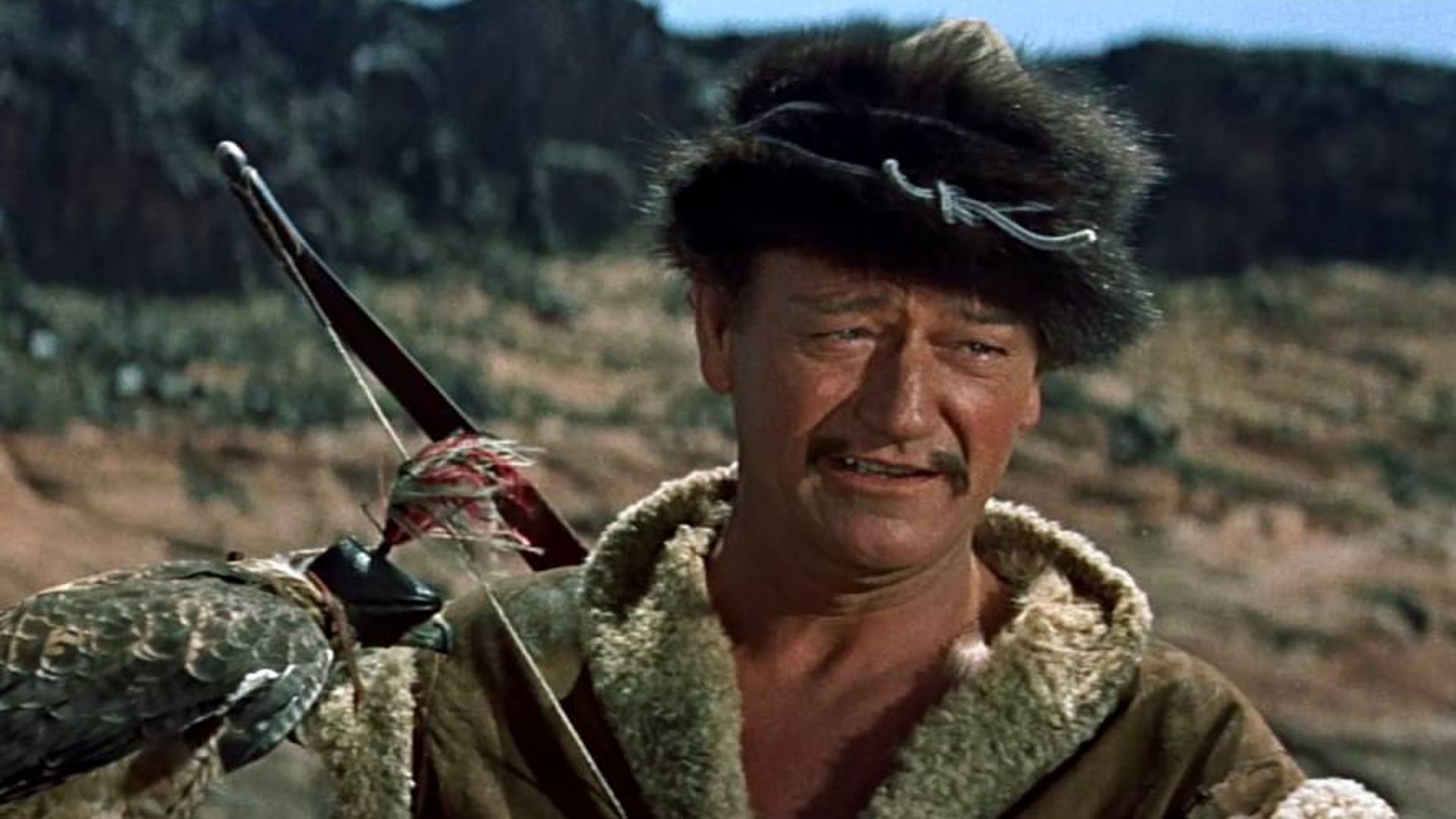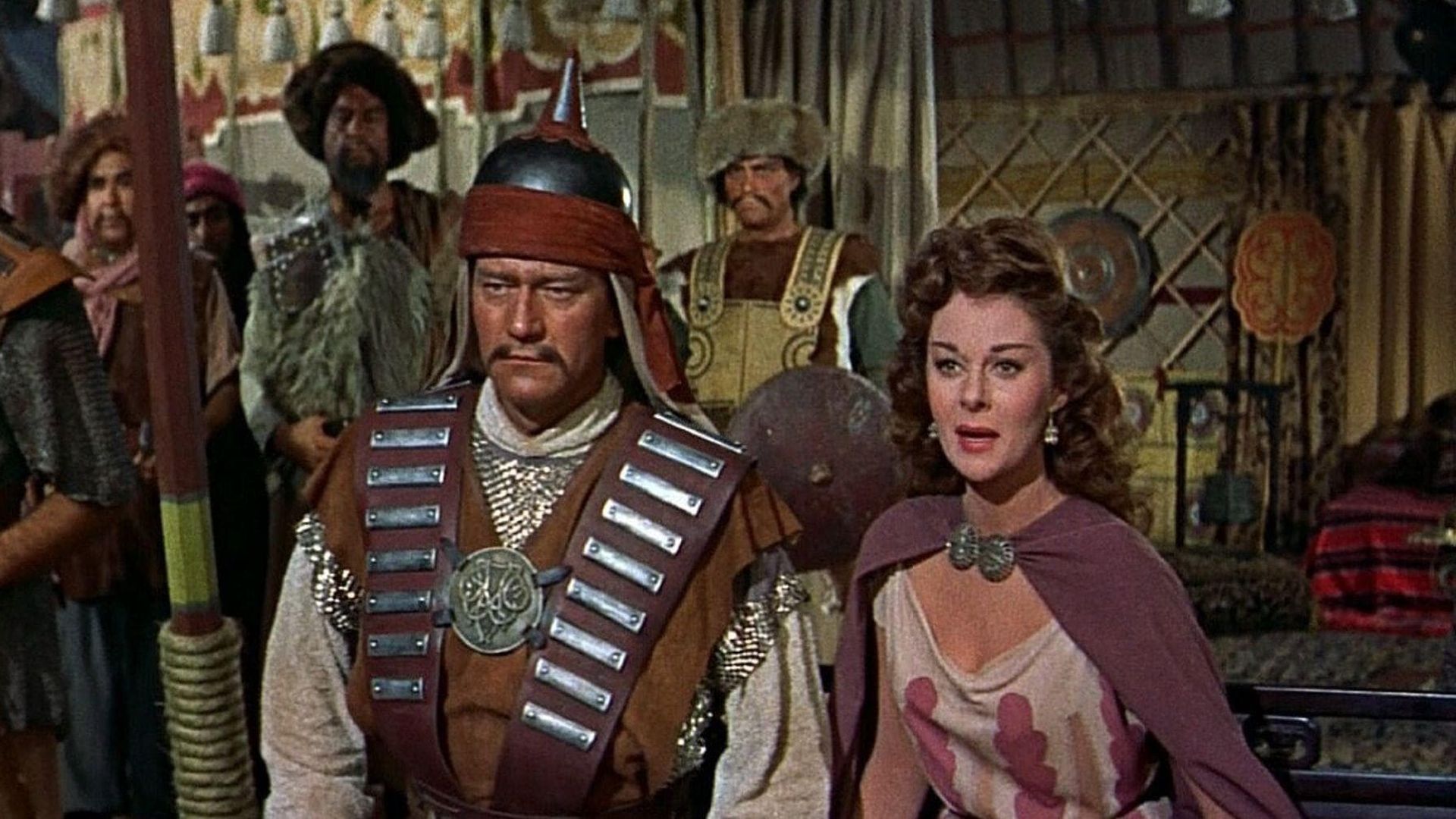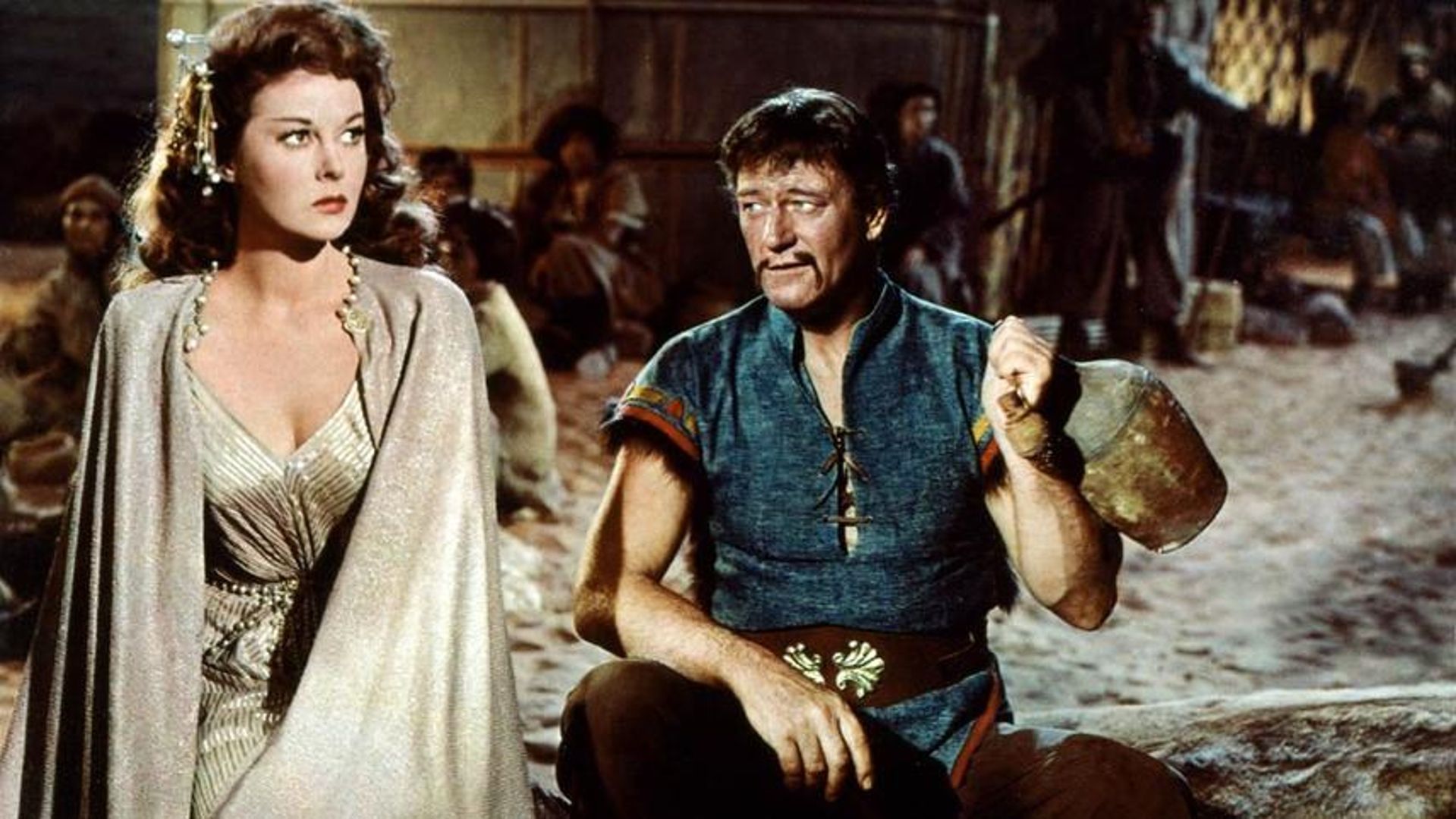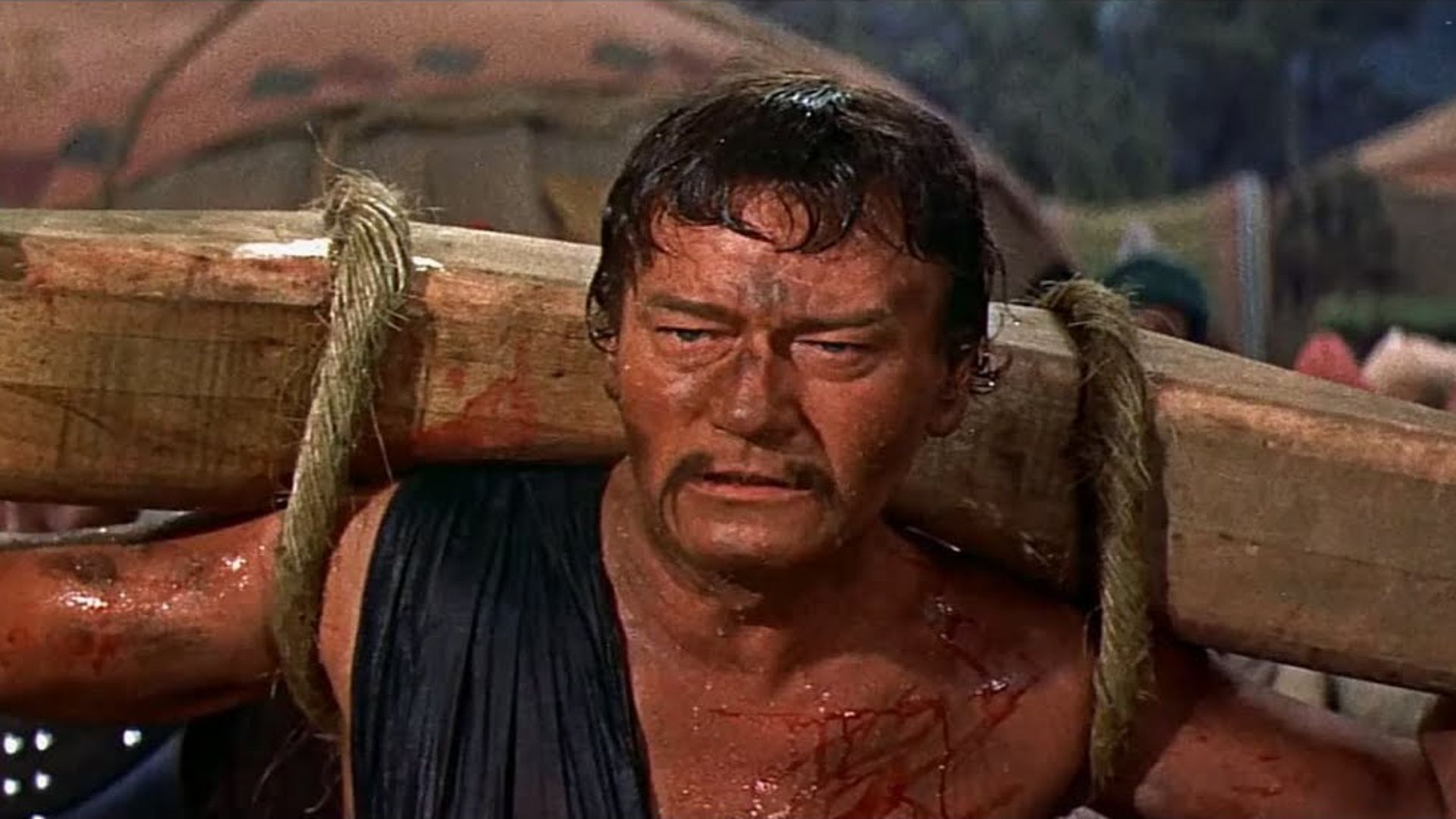Summary
- John Wayne's stint as Genghis Khan in "The Conqueror" was a tragic mistake that led to a tarnished reputation.
- The film's production near an active nuclear test site resulted in high cancer rates among the cast and crew.
- Despite being a box office failure, "The Conqueror" remains notorious for its costly budget and legacy of tragedy.
Often considered one of the worst movies ever made for several reasons, The Conqueror is undoubtedly the biggest blemish in John Wayne's career. Produced by Howard Hughes and directed by Dick Powell, the 1956 historical epic stars Wayne as Mongol chieftain Temujin, who climbs the ranks of his army to become emperor Genghis Khan. In addition to woefully miscasting Wayne in an overtly racist role, The Conqueror was eviscerated by critics at the time for its subpar filmmaking. To no one's surprise, the film cannot be streamed anywhere in 2024.
In the years since its release, The Conqueror has developed an even worse reputation. The film was shot near an active nuclear test site in St. George, Utah. The resulting radiation exposure led to 91 crew members developing cancer in their lifetime and 46 dying from the illness. It's one thing to miscast Genghis Khan with an American icon like John Wayne, it's quite another to expose the cast and crew members to deadly nuclear radiation for the sake of such a silly movie. Here's the shocking production history of The Conqueror.
What Is The Conqueror About?
Produced by Howard Hughes for RKO Radio Pictures, The Conqueror is an epic historical drama that charts the rise of Temujin, a.k.a. Genghis Khan, through the Mongolian army to become Emperor. During his rise, Khan falls in love with Bortai (Susan Hayward), the daughter of the Tartar leader Jamuga (Pedro Armendariz). As the Mongols fight the Tartars for control of the region, Khan and Bortai help each other escape danger and develop their romance. Khan gets captured by the Tartars and seeks to find the mole in his army responsible for betraying him.
Although The Conqueror was the 11th highest-grossing movie in 1956, the inaccurate historical drama lost money due to its expensive $6 million budget (as reported by Variety). Howard Hughes was notorious for overspending on his productions, and The Conqueror marked the power producer's final Hollywood credit. The failure of The Conqueror also led to the demise of RKO Radio Pictures and left a stain on Wayne's legendary Hollywood persona and decorated movie western career. In 1978, the film was listed among The Fifty Worst Films of All-Time and today holds an abysmal 3.7 IMDb rating and a 10% Rotten Tomatoes Audience Score.
John Wayne's Representation of Genghis Khan
Although Marlon Brando was originally cast to play Khan, John Wayne lobbied hard to play the role, a decision he deeply regretted later in his career. Once Brando declined, Wayne was given the role in what has been viewed as one of the worst casting decisions in cinematic history. One year after his death, Wayne received a 1980 Golden Turkey Award for "Worst Casting" for his portrayal of Khan in The Conqueror.
Wayne took the preparation to play Khan extremely seriously. He went on a strict diet and began taking Dexedrine four times daily to slim down for the role. Following the film's release, Wayne expressed regret over playing Khan. He became so regretful of his racist miscasting and poor performance that he became visibly upset when someone broached the subject with him. Wayne once famously stated that the moral of the movie was "Not to make an ass of yourself trying to play parts you're not suited for." In the years since its release, The Conqueror has come under fire for a lot more than making Wayne look foolish in a racially insensitive role.
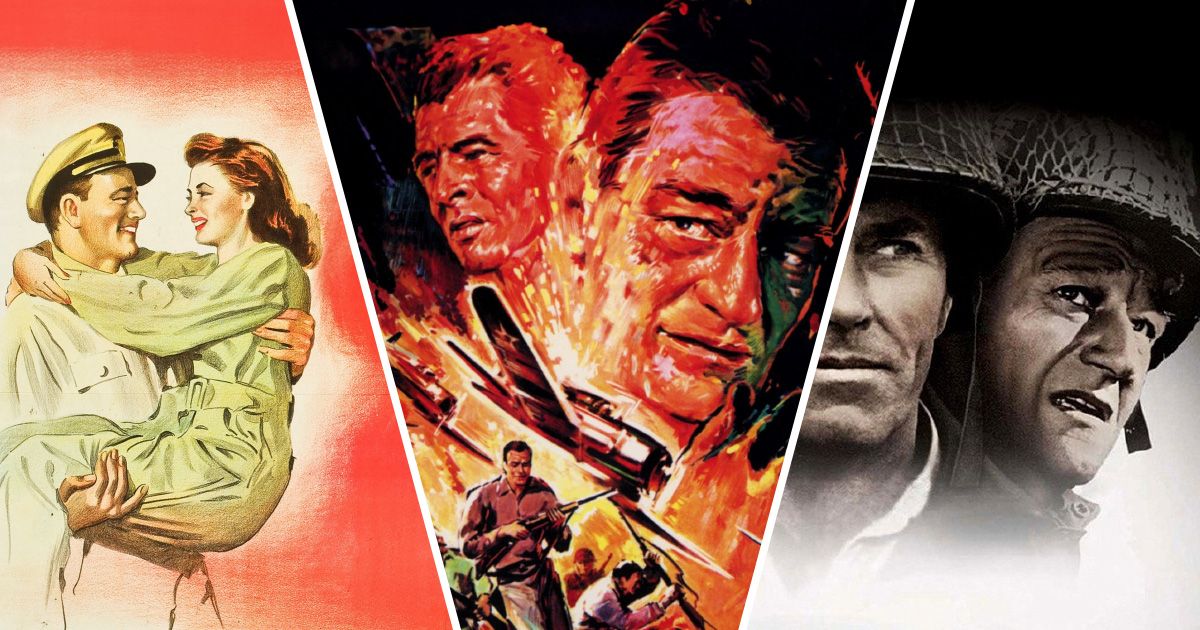
John Wayne's Best War Movies, Ranked
While John Wayne may be primarily known for his Western movies, the patriotic actor made sure to star in many war films, and these are the best.Does The Conqueror Have Blood on Its Hands?
While the racist miscasting of Wayne is disturbing enough, The Conqueror may have real blood on its hands. The movie was filmed in May-August 1954 in the Escalante Desert in St. George, Utah. Filming occurred near an active nuclear test site where 11 tests were conducted the year before production began. As a result of the windswept radioactivity, the set was contaminated with nuclear radiation that fatally affected nearly half of the cast and crew members.
According to Bathsheba's Breast by James S. Colson and confirmed by People, 91 of the 220 (41%) cast and crew members were stricken by cancer during their lifetimes following radioactive exposure. More glaring yet, Colson states:
"Forty-six people had died of the disease by 1980. Wayne survived lung cancer in 1964 but later succumbed to stomach cancer. Pedro Armendariz contracted kidney cancer in 1969 and then committed suicide in 1963 when diagnosed with cancer of the larynx. Dick Powell fell victim to lung cancer. Agnes Moorehead died of uterine cancer, and Susan Hayward ended up with cancers of the skin, breast, uterus, and brain."
Despite the evidence, many have claimed that the high rates of tobacco smoking among the deceased could be contributing factors in their cancer diagnoses. Therefore, it's impossible to quantify the exact death toll caused by nuclear radiation. Even without definitive proof of the cause of fatal cancers among the notoriously controversial movie's cast and crew, their family members maintain that the fallout led to their demise. The claim is substantiated by University of Utah Biology Professor Dr. Robert Pendleton, who stated in 1980:
"With these numbers, this case could qualify as an epidemic. The connection between fallout radiation and cancer in individual cases has been practically impossible to prove conclusively. But in a group this size you'd expect only 30-some cancers to develop. With 91 cancer cases, I think the tie-in to their exposure on the set of The Conqueror would hold up in a court of law."
John Wayne & Howard Hughes' Response
Although John Wayne famously held a Geiger Counter on set in the Utah desert while filming and claimed it was broken due to its loud alarm (signifying radiation), the Atomic Energy Commission assured Howard Hughes that the area was safe and encouraged him to continue filming to completion. Unbeknownst to him, Hughes transported 60 tons of contaminated soil from Utah to Hollywood following principal photography, further endangering his crew beyond the Escalante Desert.
Just as Wayne regretted playing Khan, Hughes also deeply regretted his decision to film in Utah in the passing years. After several cast and crew members developed cancer, Hughes spent $12 million to obtain every existing print of The Conqueror and keep it out of circulation for the public to witness. The unwatchable John Wayne movie remained under tight lock and key until Universal Pictures purchased the rights in 1979 and released it on DVD in 2012. Even so, The Conqueror cannot be streamed anywhere today.
Tying into the ugly racist tropes in The Conqueror as seen through Wayne's depiction of Kahn, the cancer statistics gleaned from the production excluded the hundreds of indigenous Americans who played extras in the film. The cancer data was skewed toward white men and women exclusively, meaning the actual number of cancer cases might be much higher than what was reported.
While there is no way of quantifying the cancerous death toll caused by nuclear radiation while filming The Conqueror, John Wayne, Susan Hayward, and Agnes Moorehead's family believe the fallout caused their death. All in all, The Conqueror is a grim reminder of Hollywood's brazen ignorance regarding racial representation and personal safety in the 1950s.

